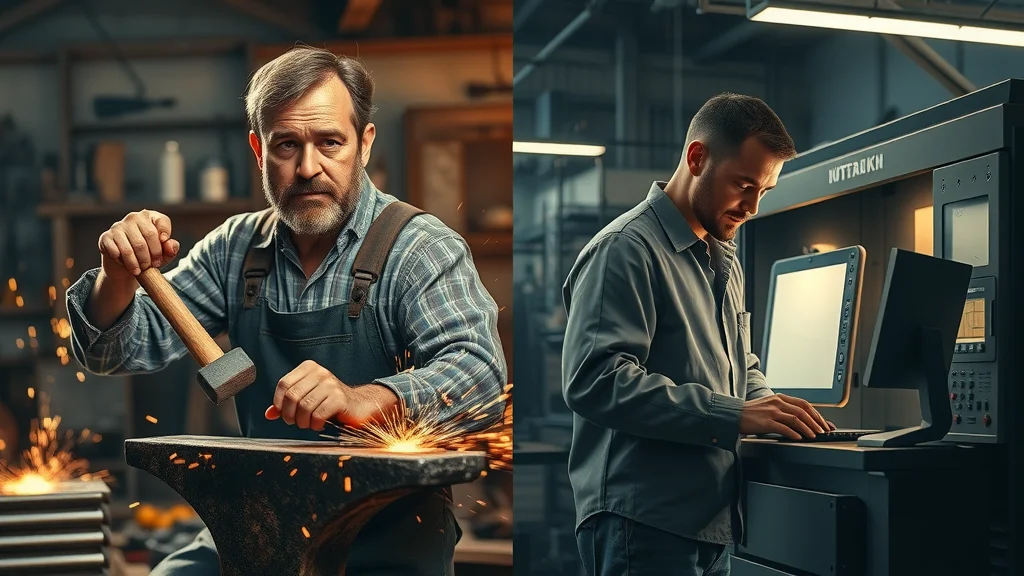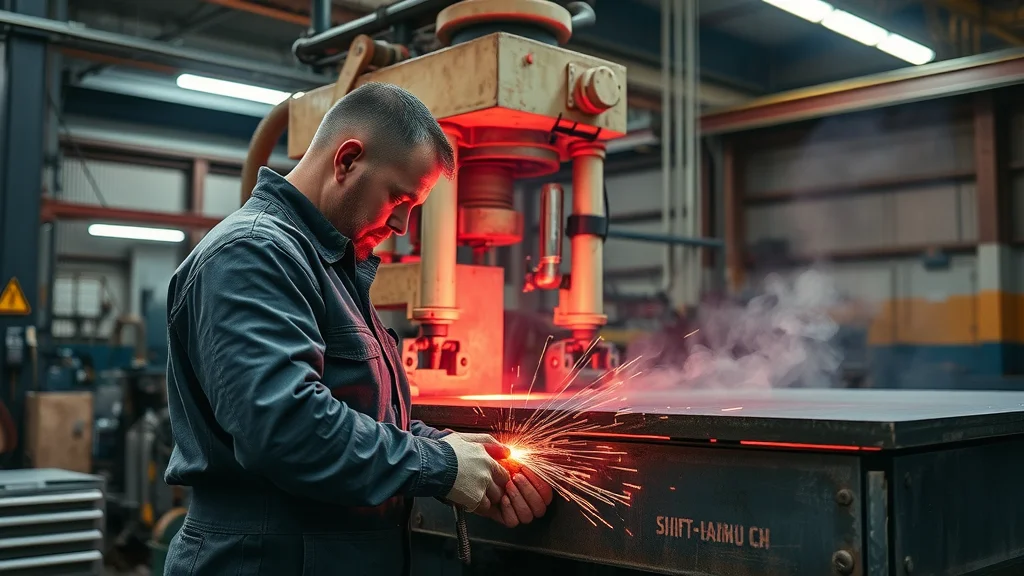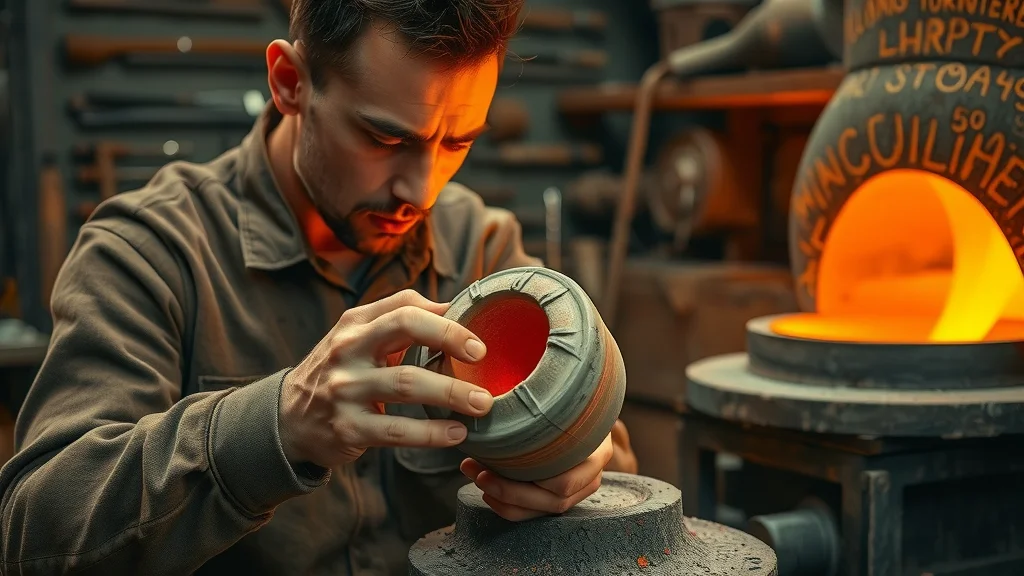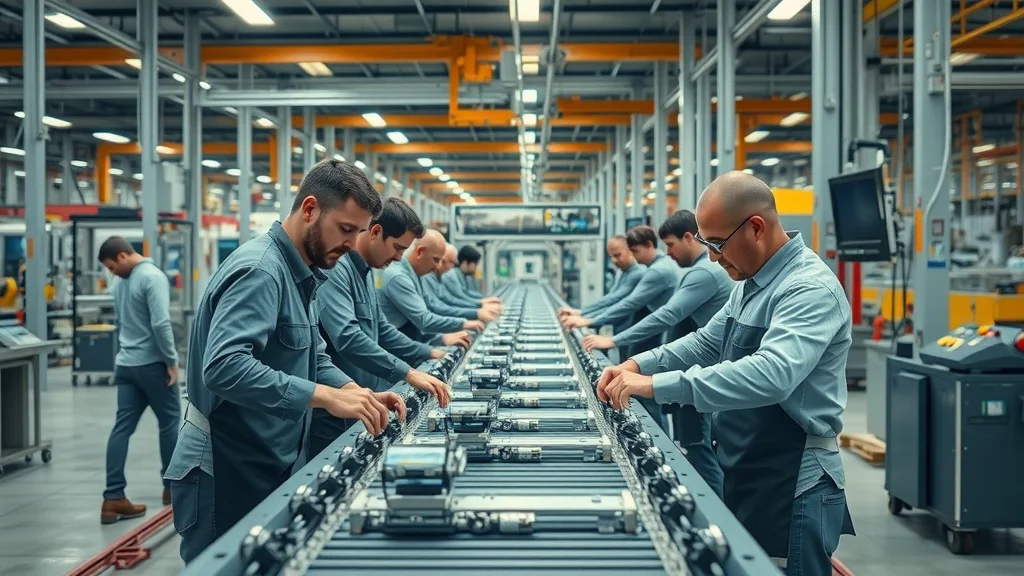Did you know that over 75% of precision failures in manufacturing are traced back to metalworking errors? If you’ve ever struggled with unpredictable outcomes in your metal projects—or watched costly mistakes set back entire production lines—then it’s time to revisit the fundamentals. In this guide, you’ll discover not only how to fix precision issues in metalworking, but also how to leverage the latest techniques and strategies for durable, consistent results in today’s rapidly shifting manufacturing world.
A Startling Look at Metalworking Today: Uncovering Unseen Challenges
"Did you know that over 75% of precision failures in manufacturing are traced back to metalworking errors?"

Metalworking is evolving at breakneck speed, yet many manufacturers and hobbyists still face daily battles with accuracy and efficiency. Precision is more than a buzzword; it's the linchpin of quality and profitability. One mishap can cascade into delayed production schedules, extra costs, or even unsafe finished products. This isn't merely theory — across countless manufacturing floors, problems like tool wear, metal fatigue, and improper process selection result in both visible and hidden defects.
When stakes and investments run high, the need for process accuracy extends beyond fixing errors: it demands a new way of thinking about tools, workflow, and material selection. In this article, discover how to spot, diagnose, and correct issues in your own metalworking process—armed with proven techniques and up-to-date strategies used by industry-leading companies as they navigate the complex waters of modern trade, tariffs, and sourcing.
Why Precision in Metalworking Matters for Global Manufacturing
Precision in metalworking isn’t just about achieving a visually perfect finish; it underpins the structural integrity, functionality, and safety of everything from aircraft parts to medical devices. Small inaccuracies can lead to component failure, product recalls, or regulatory non-compliance. In global manufacturing, where parts are often sourced from multiple suppliers, tight tolerances ensure interchangeability and streamlined assembly.
With increased reliance on digital modeling and CNC machines, precision is even more critical. Consistent results reduce waste, drive down costs, and instill confidence in end-users. Companies that prioritize accuracy and invest in regular technology upgrades often see measurable improvements in productivity—and a reputation for reliability on the world stage.
What You'll Learn About Metalworking Precision
The fundamentals and history of metalworking
Critical metalworking processes and their applications
Advanced metalworking techniques for precision
Common metalworking challenges and solutions
Updates on global metalworking trade environments
Defining Metalworking: Foundations, Terminology, and Importance
What is Metalworking?
"Metalworking, often referred to as the backbone of industry, encompasses a wide array of processes that turn raw metals into vital components for construction, automotive, aerospace, and more."
Metalworking refers to the techniques and processes used to shape, cut, and join metals, transforming raw materials into essential items. Every shiny metal part, gear, or chassis you see in cars, buildings, or machinery started as a rough metal object—brought to shape through precise manipulation and control. From forging and casting to sophisticated machining and joining, metalworking covers not only the fabrication process but also the science behind material selection, tool choice, and process optimization.
Understanding metalworking terminology is crucial: it covers everything from the types of metal used (steel, aluminum, brass) to specific techniques like metal forming, metal cutting, and welding. Mastering foundation concepts empowers you to diagnose problems and select the best metalworking process for your goals, whether crafting a prototype or mass-producing millions of identical components.
Evolution of the Metalworking Process: From Ancient Tools to Modern Machines

Evidence of metalworking dates back thousands of years, from the earliest blacksmiths hammering iron to today’s computer-controlled factories fabricating intricate components. Early artisans relied on basic hand tools, heat from forges, and muscle power to create everything from swords to jewelry. Over centuries, the metalworking process evolved through discoveries like casting, tempering, and the introduction of alloys.
The industrial revolution ushered in an era of machines: lathes, milling machines, and presses revolutionized productivity. Today, digital controls, automation, and computer-aided design (CAD) allow for virtually flawless execution of even the most complex metal parts. Each technological leap—from the furnace to the CNC machine—has enabled greater precision, efficiency, and consistency, redefining what’s possible in global manufacturing. As materials and methods advance, so too does the potential for innovation and success in the field of metalworking.
Types of Metalworking: Exploring Techniques and Metalworking Processes
Metal Forming: The Art of Shaping Metals

Metal forming is one of the oldest yet most essential metalworking techniques, responsible for shaping metal objects without removing material. By applying compressive forces—via tools like presses, hammers, and rollers—raw metal is bent, stretched, or compressed into a desired shape. Forging and sheet metal forming, for example, allow manufacturers to achieve remarkable strength and customized profiles by aligning metal grains in the optimal direction.
The value of skilled forming extends well beyond aesthetics. It enhances the mechanical properties of metal parts, producing durable, lightweight solutions for industries such as automotive and aerospace. With modern innovations, advanced machines can create unique geometries from high-strength alloys at speeds previously unimaginable, ensuring efficiency and end-product quality. Understanding when and how to apply various forming techniques is a key factor in successful metalworking projects, whether scaling up production or crafting one-of-a-kind pieces.
Metal Cutting: Achieving High Precision
Metal cutting processes—such as machining, milling, and turning—use sharp, precise cutting tools or abrasive methods to remove material from a bulk metal part. Unlike forming processes that reshape metal by force, cutting achieves accuracy by trimming away excess, allowing intricate details, holes, threads, and tight tolerances. CNC machines now dominate high-precision industries, with custom-coded instructions steering the cutter’s every move to micron-level accuracy.
A well-maintained machine tool and the right choice of cutting tool are essential for cost efficiency and repeatability. Advances in cutting technology, from multi-axis mills to laser and waterjet cutters, have opened new possibilities in the fabrication process. Selecting the appropriate method ensures surfaces are smooth, parts are interchangeable, and overall waste is minimized.
Joining Process in Metalworking: Welding, Riveting, and Beyond
The joining process binds separate metal parts together, forming everything from bike frames to skyscrapers. Common joining methods include welding (using heat to fuse metals with or without filler metal), riveting (mechanical fastening), and modern adhesive bonding. The optimal choice of joining method depends on metal type, joint strength requirements, and mobility of the metal object after assembly.
Advanced manufacturing often relies on precise control over temperature, alignment, and processing environment during joining. Each approach offers unique benefits: welding delivers seamless, high-strength connections, while mechanical joins are often preferred for components requiring regular disassembly. Mastery of joining processes is therefore vital to achieving structurally sound, high-quality metalworking results.
Forging
Casting
Sheet metal forming
Extrusion
Machining
The Metalworking Process Step-by-Step: Methods and Workflows
Preparation: Understanding Types of Metal Used in Metalworking

Successful projects begin with a clear understanding of types of metal and their unique properties. Steel is prized for its strength and versatility; aluminum offers lightness and corrosion resistance; copper boasts superior electrical conductivity; brass delivers machinability and decorative appeal; precious metals like gold excel in specialized applications. By examining grain structure, hardness, thermal capacity, and machinability, metalworkers match the right material to each job’s requirements.
Metals must be prepped—cleaned, cut, and sometimes annealed—before entering any fabrication process. The right preparation streamlines the metalworking process, minimizes tool wear, and secures dimensional stability throughout forming, cutting, or joining. This foundation allows precise control over end results, especially when critical tolerances and surface finishes are needed.
Forming Processes Versus Cutting Techniques: When to Use Which
The choice between forming process and cutting techniques is driven by project goals. Forming is preferable when strong, contoured shapes with minimal waste are desired—think automotive panels or I-beams. Cutting takes precedence for carving out detailed features, slots, or threads in solid material or when producing one-off prototypes from blank stock.
Hybrid workflows combine both strategies: for instance, sheet metal is first formed, then precise holes and features are machined in. Such integrated approaches offer the best of both worlds—robust, efficiently produced base shapes with detailed customization. Understanding the trade-offs between forming and cutting helps ensure both efficiency and accuracy in your projects.
Comparison of Metalworking Processes |
|||
Process |
Material State |
Main Goal |
Common Applications |
|---|---|---|---|
Forming |
Solid (heated or cold) |
Shape without removing material |
Automotive parts, structural beams |
Cutting |
Solid |
Remove material for precision features |
Machine components, threaded parts |
Casting |
Molten metal |
Shape via pouring molten into molds |
Complex shapes, engine blocks, artistic pieces |
Joining |
Multiple metal parts |
Fuse together for assemblies |
Frames, piping systems, heavy machinery |
Quality Control and Inspection in Metalworking Process
No metalworking process is complete without thorough quality control. Inspection tools like calipers, surface plates, and micrometers verify dimensions and surface finish; visual and non-destructive testing check for cracks, porosity, or inclusion. In high-stakes industries, in-process checks and automated sensors catch deviations in real time, halting flaws before they multiply.
Setting up robust inspection workflows prevents small defects from undermining whole batches and helps trace errors to root causes. Whether you’re producing a single custom part or running a high-volume production line, stringent quality checks are essential to achieving and maintaining world-class precision.
Casting Techniques: A Deep Dive into Lost Wax and Sand Casting in Metalworking
Lost Wax Casting Process for Precision Metalworking

Lost wax casting—also called investment casting—is a centuries-old process revived for today’s most intricate metalworking challenges. It starts with shaping a wax model of the desired shape, enclosing it in a ceramic shell, and then melting the wax away to leave a precise cavity. Molten metal is poured in to create a metal object perfectly mirroring the initial design.
The lost wax approach excels at producing complex geometries, smooth surfaces, and fine detail, especially for aerospace, dental, and jewelry applications. Because the ceramic shell can capture even the most delicate features, lost wax is favored when traditional machining or metal forming would be too difficult or wasteful. Advances in materials and computer modeling continue to push the possibilities of investment casting ever further.
Wax Casting and Sand Casting: Choosing the Right Casting Method
While wax casting achieves superb detail and minimal finish work, sand casting stands out for its versatility and cost-effectiveness in larger, less intricate pieces. Sand casting uses compacted sand to form molds, into which molten metal is poured. It’s ideal for engine blocks, frames, and prototypes where rapid iteration is needed.
Selecting the proper method depends on part size, complexity, budget, and production volume. Lost wax casting delivers unparalleled detail at higher cost; sand casting offers quick turnaround and scalability. Both are core techniques in modern metal casting workflows and are vital for a comprehensive fabrication process.
Metal Casting Applications in Modern Industry
From aerospace turbine blades to artisanal sculptures, metal casting methods empower manufacturers to create parts that would be nearly impossible to fabricate by cutting or forming alone. Thanks to techniques like pouring molten metal into custom molds, industries can mass-produce components with precise internal cavities, complex surfaces, and consistent strength.
Recent innovations include 3D-printed molds for casting, providing additional efficiency and customization. As demands grow for ever more intricate metal objects—often with integrated functional features—metal casting’s importance continues to rise, proving it’s as critical today as ever.
Innovations in Metalworking: Techniques and Advanced Approaches
Cutting-Edge Metal Forming Techniques

The quest for sharper tolerances and greater productivity has spawned a host of new metalworking techniques. Techniques like hydroforming, explosive forming, and incremental sheet forming deliver elaborate shapes once deemed impossible. High-speed machining and 5-axis CNC machines now sculpt parts from exotic metals with lightning-fast precision, while dye-sublimation and laser texturing add unique surface characteristics.
At the cutting edge, additive manufacturing (metal 3D printing) creates layered metal objects straight from CAD models, enabling complex geometries and rapid prototyping. These breakthroughs empower manufacturers to tackle both high-mix custom orders and high-volume production with confidence, accuracy, and speed.
Integrating Automation in the Metalworking Process
Automation is transforming metalworking, seamlessly blending human expertise with the power of machines and digital control. Automated CNC machine stations, robotic welding and material handling, and real-time data collection through sensors all streamline workflows, boosting throughput while minimizing manual errors.
Companies have invested in smart technology, training their workforce to adapt to computer-integrated environments and cross-train on both classic and digital tools. The result? Safer operations, better consistency, and the freedom to take on ever more ambitious projects in a global landscape.
"Advanced CNC machining has revolutionized how we approach complex metalworking techniques for industries demanding ultimate precision."
Sustainable Metalworking Practices in Global Supply Chains
Sustainability is no longer optional. Modern metalworking must reduce waste, recycle materials, and limit energy use—practices now central to global supply chains. Closed-loop cooling, scrap recovery, and environmentally-friendly lubricants are only the beginning. Companies embracing sustainable methods not only shrink their environmental footprint but also respond to increasing demands from customers and regulators.
Sustainability drives efficiency. By rethinking processes, optimizing material use, and investing in clean technology, manufacturers stay competitive while ensuring compliance with evolving trade and environmental standards.
Metalworking at Scale: How Manufacturers Optimize Precision and Efficiency
Case Study: Industrial Supply Co’s Response to Trade and Supply Chain Shifts

The recent global wave of tariffs, reshoring initiatives, and supply chain disruptions posed significant challenges for many manufacturers. One Industrial Supply Co responded by diversifying its supplier base, investing in inventory management systems, and streamlining sourcing from both local and international partners. This agility, combined with the adoption of advanced automation and continuous worker training, allowed them to maintain—and even improve—precision in their metalworking output.
Lessons from this case study emphasize the value of resilience, transparency, and adaptability. By closely tracking trade environments and proactively adapting process workflows, companies can ensure high-quality products reach global markets, regardless of shifting economic currents.
Global Sourcing Challenges in Metalworking
Global trade vibrates with complexity. Sourcing raw metals and high-precision parts across borders involves logistics, complex regulation, tariffs, and rapidly fluctuating material prices. Manufacturers must now weigh the cost-effectiveness of distant vendors against the risk of prolonged delivery times and changing tariff structures.
Strategies to mitigate these risks include near-shoring (sourcing from neighboring countries), renegotiating supplier contracts, and investing in vertical integration. Maintaining agility, with flexibility to shift sourcing in response to trade changes, has become a hallmark of the best-in-class metalworking shops.
Reshoring and Its Impact on Metalworking Processes
Reshoring—the return of manufacturing to home markets—now shapes both small shops and large-scale industrial firms. Many organizations view reshoring as a way to bolster supply chain resilience, reduce lead times, and foster closer relationships with suppliers. Yet it can introduce fresh challenges: labor shortages, the need for new local material sources, and investments in new machine tools or compliance.
Success depends on more than just moving operations; it requires adapting metalworking processes to new materials and labor pools, leveraging automation for efficiency, and maintaining rigorous standards for precision and quality. The future of metalworking is global, but with a renewed focus on robust, flexible, and locally empowered operations.
People Also Ask: Essential Metalworking Questions Answered
Is metalworking an expensive hobby?
Exploring Costs: Tools, Materials, and Skills Needed for Hobby Metalworking
Metalworking can be a highly rewarding hobby, but costs vary depending on the scale and ambition of your projects. For beginners, basic hand tools (hammers, files, simple cutting tools) and affordable sheet metal or small metal stock can get you started on jewelry or household items without a huge investment. As your skills grow, adding power tools, a small welding setup, or even a bench-top CNC machine increases both your capability and expense.
Materials like aluminum and mild steel are budget-friendly, while precious metals and specialty alloys increase costs. Purchasing used equipment, starting with simple projects, and attending local workshops can help you learn efficiently without breaking the bank. The most significant investment is your time: patience and practice are essential for mastering technique and creating polished, precision metal objects.
What is metal working called?
Terminology: Understanding the Range from Metal Fabrication to Machining
Metalworking is an umbrella term that covers a broad range of activities, from casting and forging to cutting and welding. The scope includes both industrial processes, like machining (using a milling machine, lathe, or CNC machine), and artisanal crafts, such as blacksmithing or jewelry making. Other terms commonly used are “metal fabrication,” which typically refers to assembling structures or parts using different processes, and “machining,” which usually describes operations performed with powered cutting tools.
Each branch of metalworking uses its own terminology, but all fall under the discipline of transforming raw metal into a desired shape, function, or artwork through systematic technique and skilled labor.

What is the difference between metallurgy and metalworking?
Comparing Metallurgy and Metalworking Processes
The distinction between metallurgy and metalworking lies in focus and scope. Metallurgy is the science of understanding metal properties, their extraction from ores, and methods for refining and alloying to achieve specific characteristics. Metalworking, meanwhile, is the hands-on process of shaping, cutting, and joining metals into usable or decorative objects.
Metalworking relies on insights from metallurgy to select the right materials and identify appropriate processes. In a sense, metallurgy sets the rules, and metalworking plays the game—working with those rules to produce results that meet or exceed technical standards for strength, durability, and performance.
What are the six most common types of metal working?
Overview of Key Metalworking Techniques Used Worldwide
Six core metalworking techniques dominate industries around the globe:
Forging – Hammering or pressing metal to shape it, strengthening via grain alignment.
Casting – Pouring molten metal into molds for complex or large parts.
Machining – Using tools (like lathes or CNC machines) to remove material and create precise features.
Welding – Fusing metal parts using heat, sometimes with filler metal to join.
Sheet Metal Forming – Bending, stretching, or rolling thin metal sheets for everything from car bodies to electronics enclosures.
Extrusion – Forcing heated metal through a die to create long, uniform shapes like pipes or rails.
Metalworking Techniques for Precision Results: Expert Tips and Best Practices
Mistakes to Avoid in Metalworking for Improved Accuracy

Even seasoned pros can trip up in the quest for perfect results. The most common missteps include neglecting proper material selection, using the wrong cutting tool or forming process, skipping essential quality control steps, and failing to maintain equipment. Poorly calibrated tools lead to inaccuracies that compound down the line, while rushing through measurements or skips in safety procedures can result in injuries or ruined workpieces.
Other risks include improper cooling during machining, not accounting for material springback in forming, or misjudging weld parameters in joining. Diligence, patience, and continuous learning are keys to catching potential errors before they derail your project. Keeping a record of successful techniques and learnings also helps build a culture of precision and improvement in your shop or factory.
Checklist: Essential Metalworking Tools for Precision
Calipers
Micrometers
Angle gauges
Surface plates
Scriber sets
A well-organized, high-quality toolkit is the backbone of precision in metalworking. Digital and analog calipers offer fast, reliable dimension checks. Micrometers ensure accuracy down to the finest increments, while angle gauges and surface plates verify squareness and flatness. Scriber sets help mark consistent guidelines, reducing measurement drift and positioning errors.
Investing in and maintaining this toolkit ensures each production run or handcrafted batch starts on solid ground—providing confidence and consistency from setup to final inspection.
Safety Considerations in All Metalworking Processes
Safety is paramount at every stage of metalworking. Eye protection, gloves, ear defenders, and protective footwear should never be optional. For welding or working with molten metal, invest in proper face shields, fire-resistant clothing, and fume extraction systems. Regular workspace cleaning, tool maintenance, and clear communication minimize risks of cuts, burns, eye injuries, or respiratory issues.
Remember: a safe, organized environment isn’t just about compliance—it’s essential for maintaining attention to detail, morale, and long-term success in metalworking.
Tables: Comparing Metalworking Processes, Materials, and Costs
Material Properties vs. Best-Fit Metalworking Technique |
|||
Material |
Property |
Recommended Technique |
Relative Cost |
|---|---|---|---|
Steel |
High strength, tough |
Forging, machining, welding |
Moderate |
Aluminum |
Light, corrosion-resistant |
Sheet metal forming, extrusion, machining |
Low to moderate |
Copper |
Conductive, ductile |
Stamping, casting |
Higher |
Brass |
Easy to machine, decorative |
Machining, lost wax casting |
Moderate to high |
Precious Metals |
Soft, excellent detail |
Lost wax, sand casting |
Very high |
Key Takeaways from Modern Metalworking Experts
Precision in metalworking relies on appropriate process and tool selection
Continuous training and technology investments enhance quality
Global trade changes are shaping sourcing strategies in metalworking
Frequently Asked Questions (FAQs) on Metalworking
Which metal is easiest for beginners in metalworking?
Aluminum is often recommended for beginners due to its softness, light weight, and forgiving nature for cutting, bending, and forming. It’s readily available, inexpensive, and doesn’t require specialized tools, making it an excellent choice for learning metalworking basics.
Can metalworking be done without automation?
Absolutely! While automation increases efficiency and precision in industrial settings, countless successful projects—both hobby and professional—rely on manual tools and human skill. Basic techniques like filing, sawing, and hammering remain fundamental, and with care and practice, manual methods can yield exceptional results.
How do tariffs impact metalworking costs?
Tariffs directly affect the import price of metal stock and fabricated parts, leading to higher production costs. Manufacturers may pass these increases on to customers or seek alternative sourcing. Monitoring trade policy is essential to anticipate cost changes and select suppliers for the best outcomes.
What safety gear is essential for metalworking?
Key safety gear includes safety goggles, gloves, ear protection, steel-toe boots, and fire-resistant clothing. Tasks involving high heat or molten metal may require full face shields and respiratory protection. Setting and maintaining high safety standards helps prevent common injuries.
Conclusion: The Future of Precision Metalworking in a Changing Trade Landscape
Adapting Metalworking to Meet New Global Demands
Future-ready manufacturers continuously adapt—to new materials, markets, technologies, and global supply chain realities—keeping metalworking at the heart of modern progress.
Why Continuous Innovation Is Crucial for Manufacturers
Innovation in tools, techniques, and training is non-negotiable for companies facing global competition and shifting trade dynamics in metalworking.
 Add Row
Add Row  Add
Add 




Write A Comment